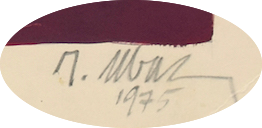

(Malmedy, Belgique 1910 - Dieudonné, France 1985)

Raoul Ubac ((real name Rudolf Gustav Maria Ernst Ubach) was born in Malmédy, Belgium, in 1910. He attended school there until 1928, when he set off on a walking tour of Europe. He settled in Paris in 1930.
From 1930 to 1934, Raoul Ubac made contact with the Surrealists and frequented the Montparnasse studios. He then enrolled at the Cologne School of Applied Arts, where he worked in drawing and photography. Moving away from painting for a while, he devoted himself to creating surrealist photographs, which he exhibited in 1933, using the processes of burning, solarization and petrification.
His photographs were published in the magazine Minotaure, and in 1938 André Breton commissioned him to photograph the mannequins presented at the Exposition internationale du surréalisme.
In 1940, he co-directed the magazine L'invention collective with René Magritte. He lived between Paris and Brussels, where he held his last photography exhibition in 1941, which was quickly closed by order of the occupying forces.
Through the poet Jean Lescure, he met Paul Éluard, Raymond Queneau and André Frénaud. He gave up photography in 1945.
During this period, Ubac discovered slate, with which he created prints in which sculpture and engraving seem to combine. The lines are uncluttered, and the works have a mystical quality.
From 1951, the Aimé Maeght gallery regularly exhibited his gouaches and canvases. The gallery went on to publish many of the artist's engravings and lithographs.
In 1968, retrospectives were organized in France (Paris) and Belgium (Charleroi, Brussels). Ubac created wall decorations, cartoons for tapestries, illustrations for numerous books and stained-glass windows, going from monumental works to postage-stamp size.
Raoul Ubac died in 1985 in Dieudonné, France.
Raoul Ubac's creative commitment was total, almost religious; over time, his work became simpler, gradually rediscovering the purity of primitive art. Meditative, the artist declared in an interview: "I would like a state of innocence that would reflect the splendor of the world through the work".